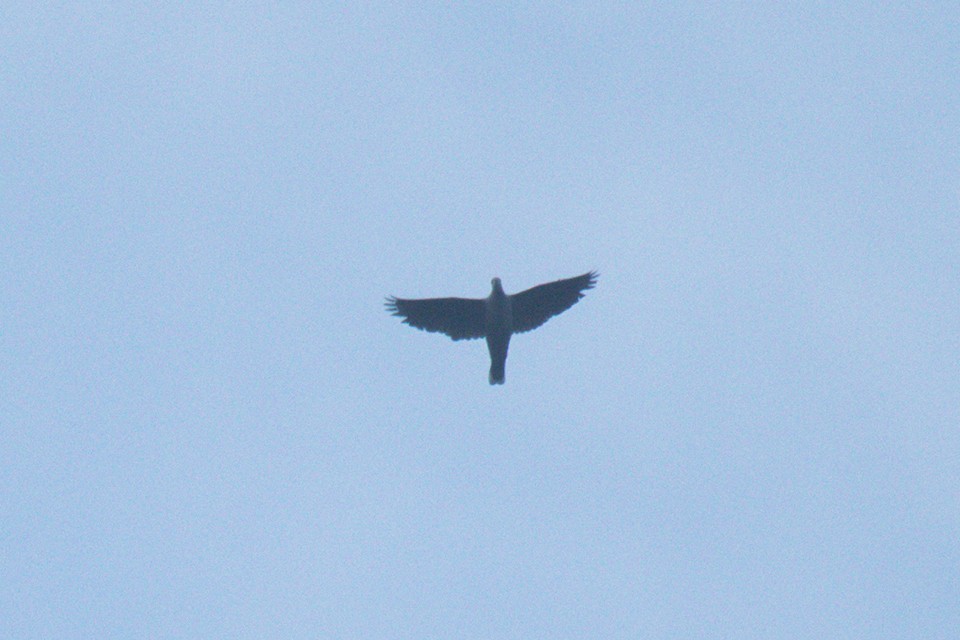Mountain Imperial Pigeon
A species of Imperial pigeons Scientific name : Ducula badia Genus : Imperial pigeons
Mountain Imperial Pigeon, A species of Imperial pigeons
Botanical name: Ducula badia
Genus: Imperial pigeons
Content
Description General Info
 Photo By Wich'yanan (Jay) Limparungpatthanakij
Photo By Wich'yanan (Jay) Limparungpatthanakij Description
The mountain imperial pigeon is the largest pigeon species in its range at 43–51 cm (17–20 in) long. It has a fairly long tail, broad, rounded wings and slow wing-beats. The head, neck and underparts are vinous-grey with a contrasting white throat and brownish-maroon upperparts and wings, though the upper part of the body can be duller. The underwing is slate-grey and the tail is blackish with a grey horizontal line. The combination the maroon back with the large size give this species a distinctive appearance. Its call consists of a deep, resonant boom that is only detectable at close range. 
Size
51 cm
Nest Placement
Tree
Feeding Habits
Mountain Imperial Pigeon's diet primarily consists of fruits and berries, with a preference for figs and nutmeg. Mountain Imperial Pigeon exhibits foraging behavior that includes plucking and swallowing food whole, and may descend to the ground to drink. Mountain Imperial Pigeon demonstrates potential altitudinal movement to find optimal feeding conditions.
Habitat
The mountain Imperial Pigeon predominantly inhabits mature primary and secondary evergreen and deciduous forests in broader geographical regions such as the Indian Subcontinent and Southeast Asian islands like Sumatra and Borneo. These birds are also known to periodically visit lowland areas and coastal mangroves, likely in response to seasonal changes. Habitats may include regions with conifers and even old rubber plantations, particularly on Borneo, although they rarely venture into scrub forests.
Dite type
Frugivorous
General Info
Feeding Habits
Bird food type

Fruit
Behavior
Though usually solitary, this species has been seen in groups numbering up to 20, especially when going to roost or flying up or down in mountains. They can be difficult to see, since they spend their time usually in high canopy and usually fly fairly high over the canopy. 
Distribution Area
The pigeon has a wide range in south-eastern Asia, where it occurs in Bangladesh, Bhutan, Brunei, Cambodia, China, India, Indonesia, Laos, Malaysia, Myanmar, Nepal, Thailand, and Vietnam. Its natural habitats are subtropical or tropical moist lowland forests, subtropical or tropical mangrove forests, and subtropical or tropical moist montane forests. It may be found from sea level to elevations of 2,550 m (8,370 ft) in the Himalayas and 2,200 m (7,200 ft) on Sumatra. Being mainly a foothill bird, it probably only breeds above an elevation of 500 m (1,600 ft), although feeding flocks below this are common. It is usually found in old-growth forests. The species is generally fairly common where extensive stands of forest remain. 

 Photo By Wich'yanan (Jay) Limparungpatthanakij
Photo By Wich'yanan (Jay) Limparungpatthanakij Scientific Classification
Phylum
Chordates Class
Birds Order
Pigeons and doves Family
Dove Genus
Imperial pigeons Species
Mountain Imperial Pigeon